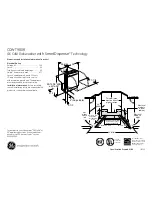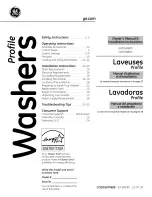
Test
2016-03-02 / DIS 840_58300000176874_ara_en_c
Copyright by BSH Hausgeräte GmbH
Page 30 of 157
5.2
Checking the ventilation valve
Fig. 2:
Ventilation valve
1
Input to water outlet
4
Float chamber
2
Output from water outlet
5
Float
3
Air duct
6
Ventilation opening
When emptying, water is pumped via the water outlet from the heat exchanger /
water inlet system to the outlet hose.
This produces a continuous flow of water. If the drain is lower than the appliance,
water will be siphoned out of the appliance even when the drain pump is no longer
actuated.
The chamber contains enough water to keep the float afloat so that it closes the
ventilation opening.
As soon as the flow of water in the outlet tails off, the float moves away from the
ventilation opening. The appliance cannot be drained while the drain pump is
activated because air can enter via the ventilation opening.
If there is a problem with the outlet hose (kinked or blocked) then pressure will
build up. The electronics detects the fault via the drain pump. A fault code is
recorded in the electronics
Prerequisite:
•
The appliance is filled with water.
•
Left side panel has been removed. (Page 115)
The ventilation valve has the task of interrupting the siphon. The
valve is important for appliances that are installed at a height, and
in the event the siphon outlet lies below the water level inside the
appliance.
1. Start any programme and wait until it has finished filling (i.e. until one of the
spray arms moves).
2. Perform a reset (press and hold down the “Start” button for a period of 3
seconds).
3. Once a continuous flow of water has been established, open the appliance
door to interrupt the emptying process.
4.
0
If the flow of water does not stop and the appliance is pumped empty,
► tilt the appliance to free the ventilation valve and allow air to enter the
system.
5.
0
If the ventilation valve fails to open when the pump is turned off
► replace the water inlet system or heat exchanger.
















































